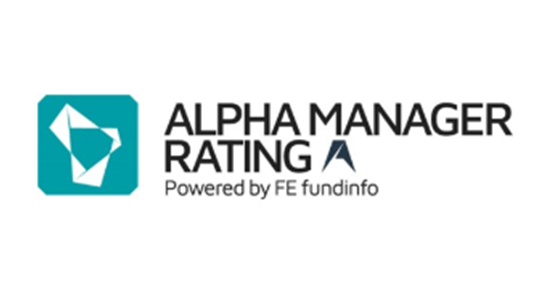In the ever-evolving terrain of global fund management, the resonance of corporate and product sustainable disclosures has ascended to paramount importance.
These disclosures serve as the bedrock for establishing transparency, fostering accountability, and steering the trajectory of investments towards sustainable initiatives.
To begin we must look at what happened in 2023. The almost never-ending smorgasbord of deadlines that reared their heads in 2022 may have eased slightly during the past year – depending on who you speak to anyway – but that didn’t mean there wasn’t still a plethora of changes: a fact highlighted in this year’s whitepaper; ‘Global Fund Management Regulatory Outlook 2024’.
In this document, the various themes that came to the fore during the year are showcased, as well as some of the key contours we can expect to navigate in 2024.
Here we take a brief look at a few of those areas.
Sustainable taxonomies: pioneering the new norms
At the vanguard of sustainable finance are the latest developments in sustainable taxonomies. In 2024, these frameworks continue to refine and broaden, encapsulating a comprehensive lexicon that categorises and defines sustainable investments.
Such taxonomies lay the groundwork for standardisation, empowering investors with clearer guidelines to distinguish truly sustainable ventures from those merely adorned with green veneers.
These include further EU delegated acts for the four other environmental objectives that sit alongside climate change mitigation and climate change adaptation – water and marine resources; transition to a circular economy; pollution prevention and control; and biodiversity and ecosystems as well as the expected consultation on the UK Green Taxonomy.
Meanwhile, in APAC, the Australian sustainable finance taxonomy is slated to finalise the initial development phase on key economic sectors later this year, Singapore launched the Singapore-Asia Taxonomy for Sustainable Finance in December 2023 and Hong Kong prototyped a Green Classification Framework to enable interoperability with other major regional taxonomies.
Challenges and opportunities in sustainable disclosures
Yet, while the push for disclosure intensifies, the terrain remains fraught with challenges. The dichotomy between incentivising comprehensive disclosure and navigating the associated complexities persists.
Balancing the quest for transparency with the need to avoid overwhelming investors with data becomes a pivotal challenge.
The EU leads the way with the development of its Sustainable Finance Disclosure Regulation (SFDR), which has been in force since March 2021 while the UK published its final rules for the Sustainability Disclosure Requirements (SDR) in November 2023, with several implementation dates, starting with the anti-greenwashing rule at the end of May this year.
There is still the risk of going back to square one for SFDR! The Commission consultation on changing the SFDR into a classification regime closed on 15 December 2023 and could signal yet another change to the disclosure obligations for sustainability funds. However, there was some push-back from fund groups, some of whom wanted a period of stability before further changes.
Should that period of stability occur then the most obvious change is that there will be four investment fund labels in the UK, instead of three. The same three labels will remain (but they now use the term “sustainability” instead of “sustainable”) while the new label, Sustainability Mixed Goals, is primarily for funds that straddle the existing categories of Sustainability Impact, Sustainability Focus or Sustainability Improvers.
The Financial Conduct Authority (FCA) has reinforced its line that no category is greener than any other by making the actual labels all monochrome. And, as before, the labels are optional, with no obligation on funds to adopt them.
However, within these challenges lie abundant opportunities, spurring innovation in data analytics and reporting mechanisms that distil complex sustainability metrics into actionable insights.
Regulatory responses to combat greenwashing
The rise of greenwashing poses a significant threat to the integrity of sustainable investments. As a response, regulatory bodies are sharpening their tools to combat this menace.
In 2024, stringent measures to curtail misleading claims and ensure accurate fund labelling take centre stage.
Regulatory interventions are aimed at fortifying credibility and trust, safeguarding investors against false promises while nurturing an ecosystem conducive to authentic sustainable investments. For example, alongside the final SDR rules in November last year, the FCA published a consultation on its guidance around how it expects fund groups to apply the anti-greenwashing rule that will come into force from 31 May.
Evolution of corporate sustainability disclosures
Corporate sustainability disclosures have undergone a significant evolution, witnessing a transformative shift. Beyond ethical obligations, companies now respond to the mounting investor demand for ESG (Environmental, Social, and Governance) insights.
In 2024, corporations are actively employing technology and data analytics to augment the precision and credibility of their sustainability disclosures. This proactive approach cultivates a deeper comprehension of their influence and contributions toward a sustainable future.
Previously, both the Department for Work and Pensions (DWP) and the FCA adopted TCFD recommendations as the foundation for mandatory climate-related disclosures. This requirement extends to listed companies, workplace pensions, asset managers, and asset owners.
While the ISSB standards lack direct regulatory influence, they have the advantage of being detailed corporate sustainability reporting standards. The UK government pledged in August 2023 to establish the UK Sustainability Disclosure Standards (UK SDS). These standards closely mirror the ISSB framework, deviating only where necessary to align with local requisites. An official endorsement of the ISSB standards by the UK government is anticipated by mid-2024.
Future of pre-contractual disclosures and PRIIPs
The future of pre-contractual disclosures, notably the Packaged Retail and Insurance-based Investment Products (PRIIPs) Regulation, is poised for transformation. As investors increasingly prioritise sustainable investments, the role of pre-contractual disclosures assumes greater significance.
In 2024, a recalibration of these disclosures is possible as part of the EU’s Retail Investment Strategy. These changes could entail both new content, such as the environmental sustainability of the PRIIP, and new delivery methods, with a focus on digital delivery and limited personalisation.
The panorama of corporate and sustainable disclosures in global fund management forges ahead with resounding significance in 2024.
While challenges persist, the trajectory is marked by innovation, regulatory fortification, and a collective commitment to fostering a sustainable financial landscape.
As front runners pave the way and others contemplate their approach, the convergence of economies, firms, and funds toward transparency and sustainability remains an indispensable compass guiding the future of investments.
That said, all bets will be well and truly off if any of these EU changes don't beat the EU Parliamentary elections taking place in June!
---
Steven Kennedy, Senior PR Manager, FE fundinfo
Charting a course in 2024: the crucial landscape of sustainable disclosures in global fund management
In the ever-evolving terrain of global fund management, the resonance of corporate and product sustainable disclosures has ascended to paramount importance.
14 February 2024


